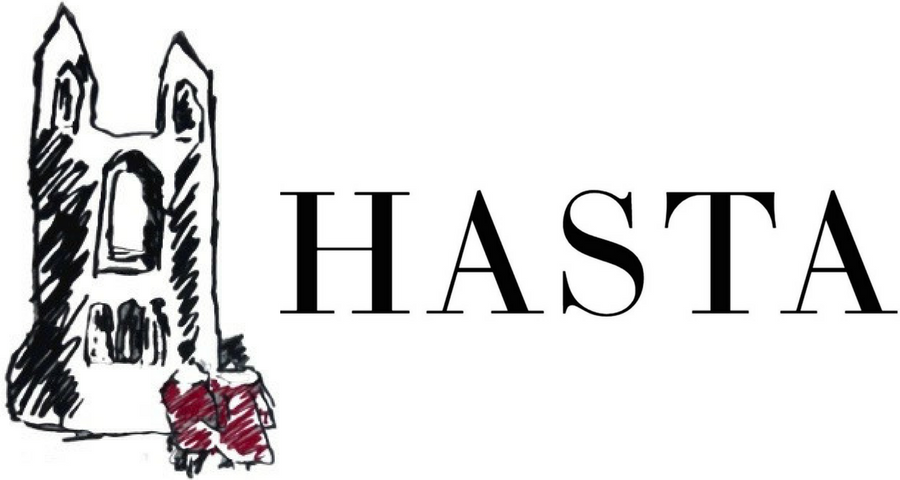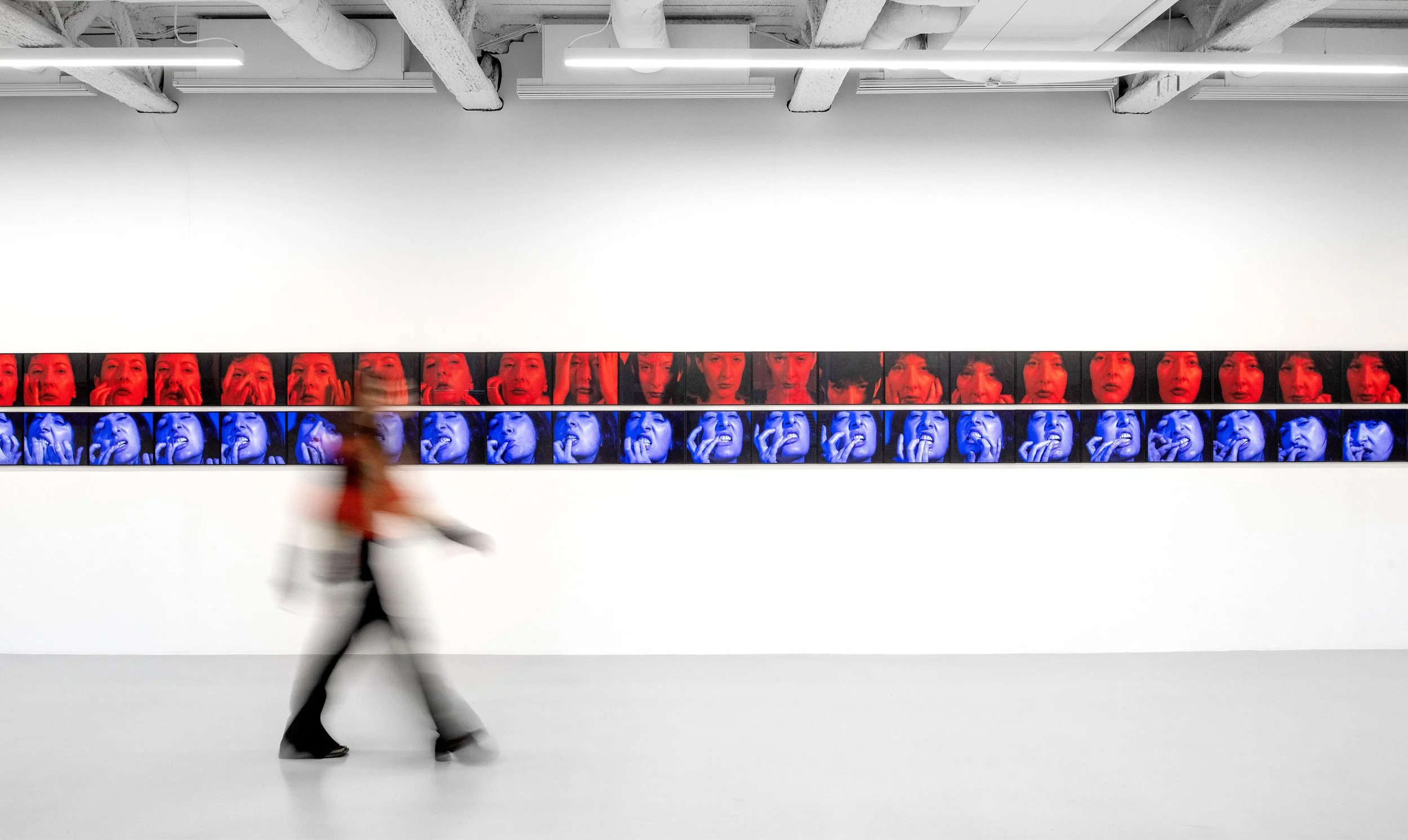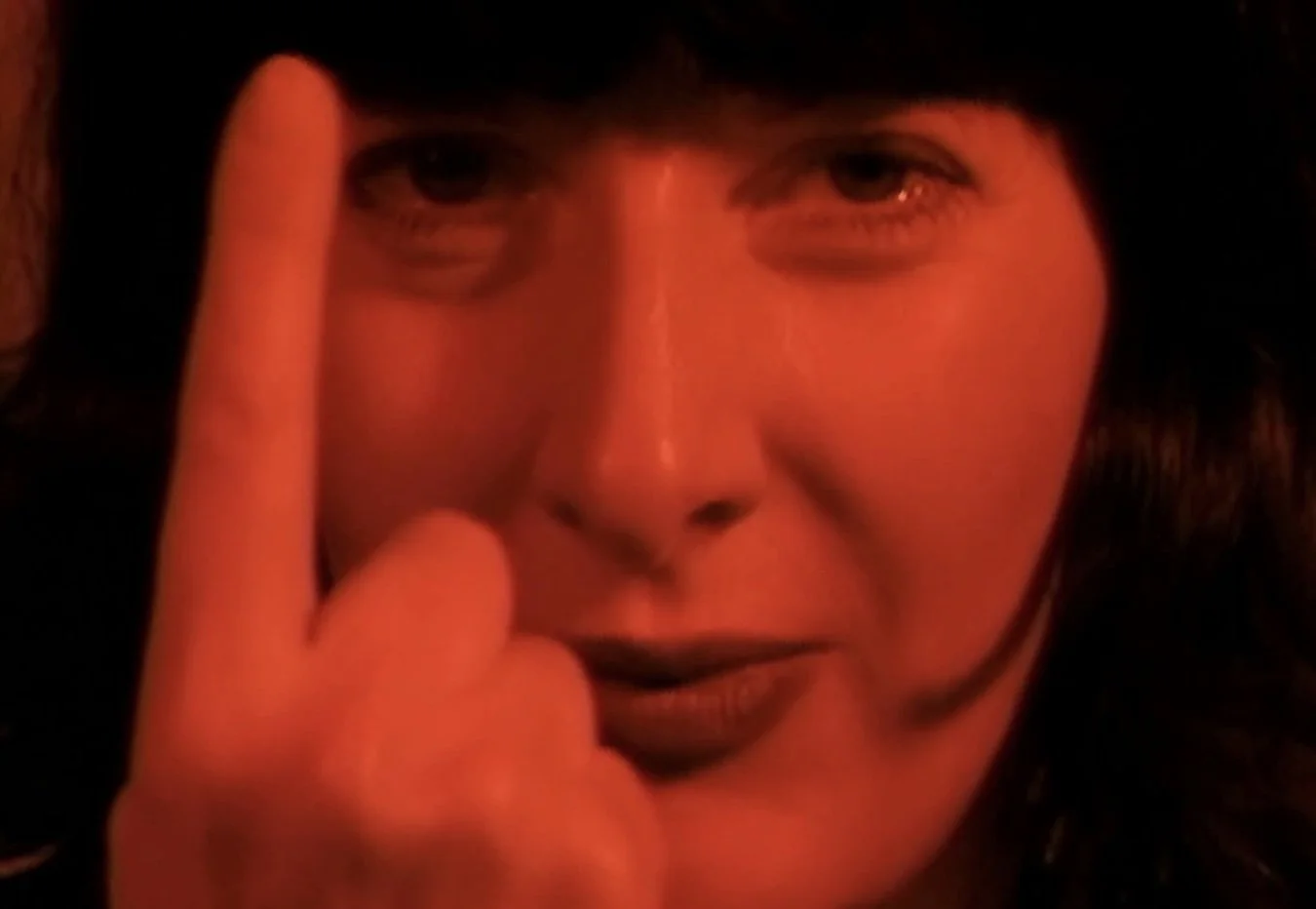Marina Abramovic Reinvents Video Portrait Gallery (1975-2022) at Saatchi Yates
By Sadie McGraw
Marina Abramovic Red and Blue Period
Image courtesy of Saatchi Yates Gallery
Conceptual artist Marina Abramovic premiered a new exhibition in Saatchi Yate’s St. James gallery, reenvisioning her performance videos, “Red Period” and “Blue Period” from the iconic Video Portrait Gallery (1975-2002). Video Portrait Gallery has been all over the world, debuting at Kunstmuseen Bern, later in the Museum of New and Old Art in Tasmania, and most recently exhibited at MUDAM in 2023 in Luxembourg. Now, Abramovic gives the art world an exciting new look at “Red Period” and “Blue Period”. The exhibition consists of a series of 1,200 individual photographic stills from her performance videos mentioned above. The exhibit is in London until October 31st of this year and is a must-see for contemporary art lovers.
When you walk into Saatchi Yates, the empty space is almost abrasive, and Abramovic’s technicolour self-portraits invite you to linger and contemplate her work in a newly accessible, considerably lengthier way compared to Video Portrait Gallery. The use of horrifyingly bright white space to frame these pieces add emphasis to the subject matter of “Blue Period” and “Red Period”. There is a prominent horizontal aspect of the work, which functions as almost a marker of time that is present within the video or in a performance but is lost in still photographs.
Marina Abramovic, Red Period 010
Image courtesy of Saatchi Yates Gallery
Abramovic’s work is incredibly visceral and sensual in a way that makes you question why the airplane hangar-esque architecture of Saatchi Yates Gallery is suddenly more erotic than a king-sized bed and rose petals. Her “Red Period” stills depict the artist in close-up, enveloped in a monochrome, piercing red. She flashes an enticing smile and beckons the viewer closer. The colour red is both a signal of passion and serves as a warning as Abramovic moulds her expression into a contentious one. From here, her guise fluctuates from the familiarly alluring to mild boredom to weariness. Her hands act as props as she progresses, fisting her hair and biting her hand with an almost animalistic magnetic vigour. The red colour evokes a sense of inviting danger, feminine seduction, as well as having connotations with sex work while it radiates vivacity.
The “Blue Period” pieces, positioned directly below “Red Period”, shows Abramovic engulfed in a similar striking blue colour. The focus shifts away from her expression and to her mouth, where she bites her fingers and nails. Here, her expression shifts from apathetic to one of agony. Abramovic’s expression is now a prop to the primary focus of her hands and mouth, directly contrasting the focus of “Red Period”. The colour in “Blue Period” creates a more subdued tone of melancholy, distance and taciturnity.
The titles “Red Period” and “Blue Period” refers to Henri Mattisse’s Red Period and Pablo Picasso’s Blue Period, respectively. While Abramovic does not directly reference the subject matters of either artist, she utilizes colour in a very similar way to these legends of art history. Picasso famously only utilized shades of blue in his monochromatic works of his Blue Period to depict sombre themes and emotionally deep conceptual subject matter. Similarly, Abramovic’s “Blue Period” utilizes the blue colour to emphasise the emotional concept behind the piece. The blue is all-encompassing and gives the piece a more solemn and grim tone. In contrast to the Picasso’s Blue Period, Matisse’s Red Period can be understood as a culmination of the Fauvism movement, utilizing colour to highlight composition over realism or pure expression. Abramovic hearkens back to Matisse by using colour to highlight her composition and subject matter. Both artists’ application of colour is overwhelming, similar to Picasso’s aforementioned style.
This exhibition is a true showcase of Abramovic’s versatility and ability to deliver her classic tones of vulnerability, expressions of sexuality, and physicality. Abramovic is most renowned for her performance work, which is not entirely lost in these pieces, but Abramovic’s performance art has a rawness to it that when experienced, it seems incredibly difficult to reproduce or capture. Part of the brilliance of her work is the degree of ephemerality of the performance juxtaposed with longevity of her art in anyone’s memory who has the pleasure of experiencing her art. This new exhibit brings a sense of longevity to her work that is not always present in her performance art. Abramovic maintains a certain degree of the intimacy and emotion that is abundantly present in all of her performance art. The St. James exhibition is an exceptional new way to interact with Abramovic’s iconic work.
Bibliography:
Rabb, Maxwell. “Marina Abramovic announces new unique print series based on iconic video works.” Artsy. October 1,2025 https://www.artsy.net/article/artsy-editorial-marina-abramovic-announces-new-unique-print-series-based-iconic-video-works
“Marina Abramovic” Saatchi Yates. October 1st, 2025.https://saatchiyates.com/exhibitions/marina-abramovic#



